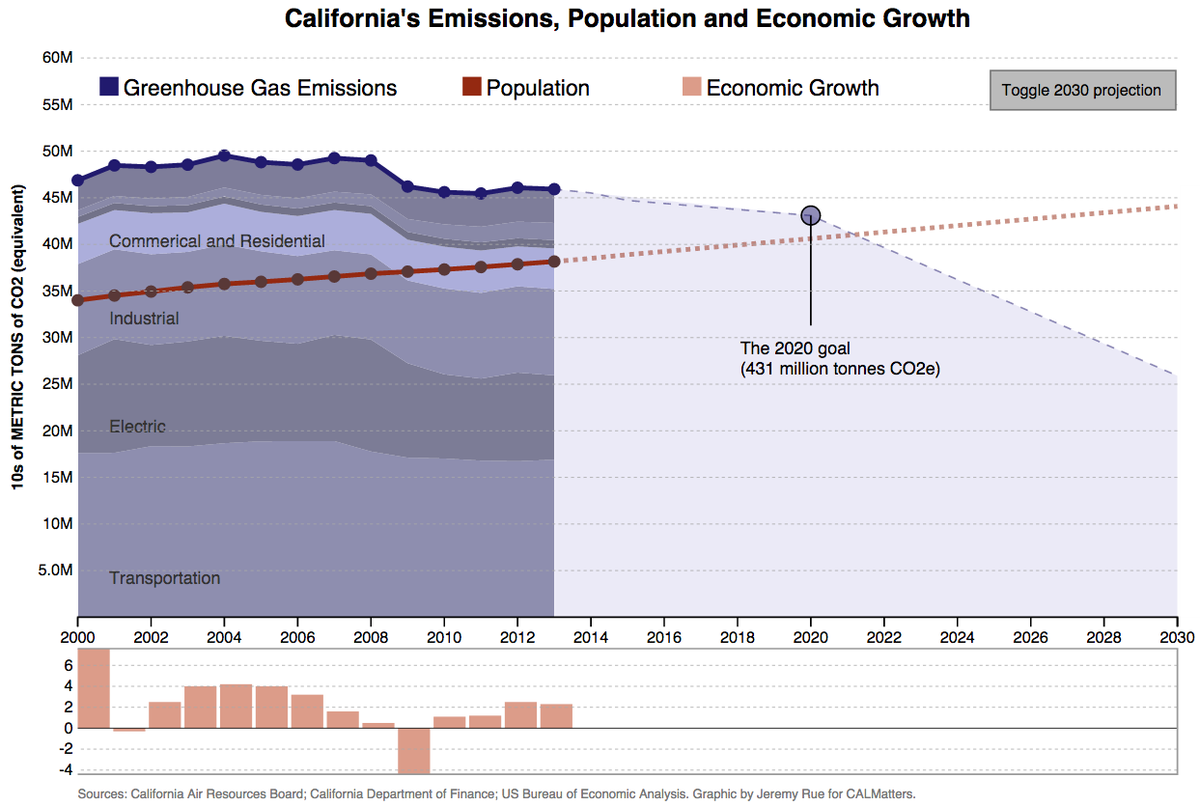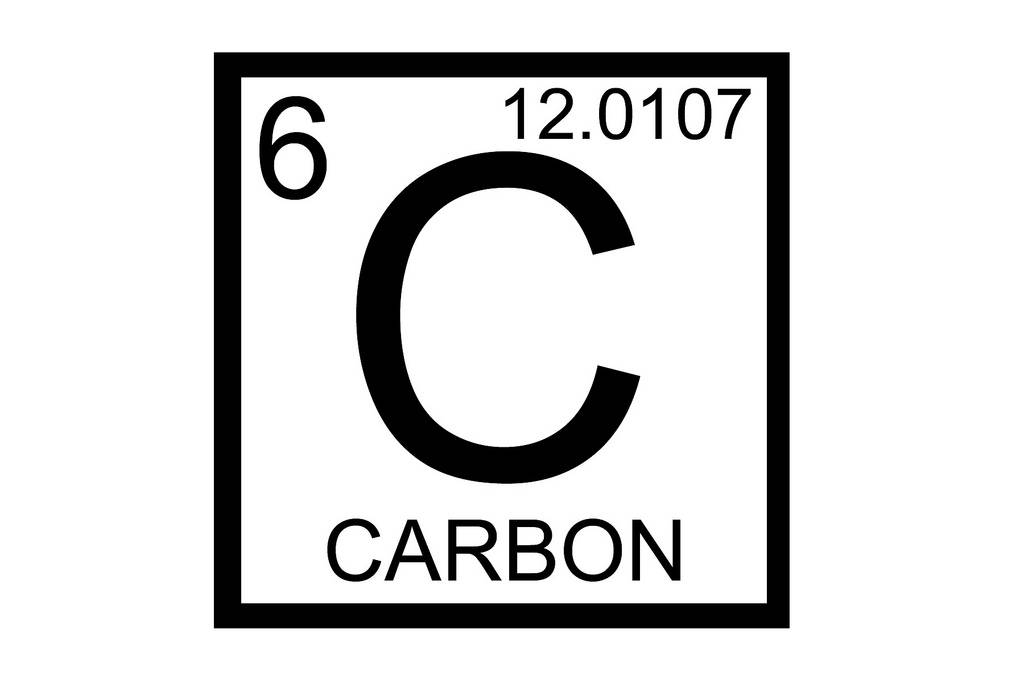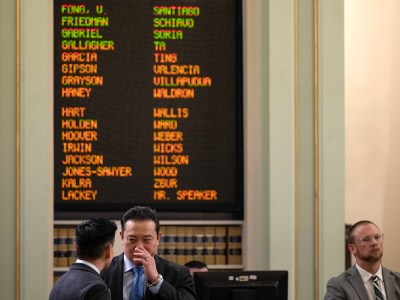Answer: Political leaders, including Gov. Jerry Brown and Senate leader Kevin de León, as well as outside analysts, predict that California will meet its 2020 greenhouse gas goal.
That goal, established by Assembly Bill 32, calls on California to shrink its greenhouse gas emissions to the amount emitted in 1990 — namely, 431 million metric tons of carbon dioxide equivalent. (“Equivalent” means that other greenhouse gases besides carbon dioxide, such as methane, are factored in.) It would be an impressive feat, considering that about 10 million more people are projected to live in California in 2020 compared to three decades earlier.
Learn more about legislators mentioned in this story
In 2006, the year AB 32 was signed into law, California’s emissions stood around 11 percent above those 1990 goals. Emissions fell sharply in 2008-9, when the financial crisis hit. As of 2013, the latest figures available, California’s emissions were 6 percent above its 2020 goal.
Between 2009 and 2013, California’s emissions fell by less than one percent. That makes clear the challenge of decarbonizing a growing economy. What gives officials confidence that the state will meet the 2020 goal is that some of the marquee programs to cut greenhouse gas emissions — such as the cap-and-trade program and the low-carbon fuel standard — are only now starting to be implemented. Emissions reductions are expected to occur more quickly as those programs take hold.
California’s Emissions, Population and Economic Growth








